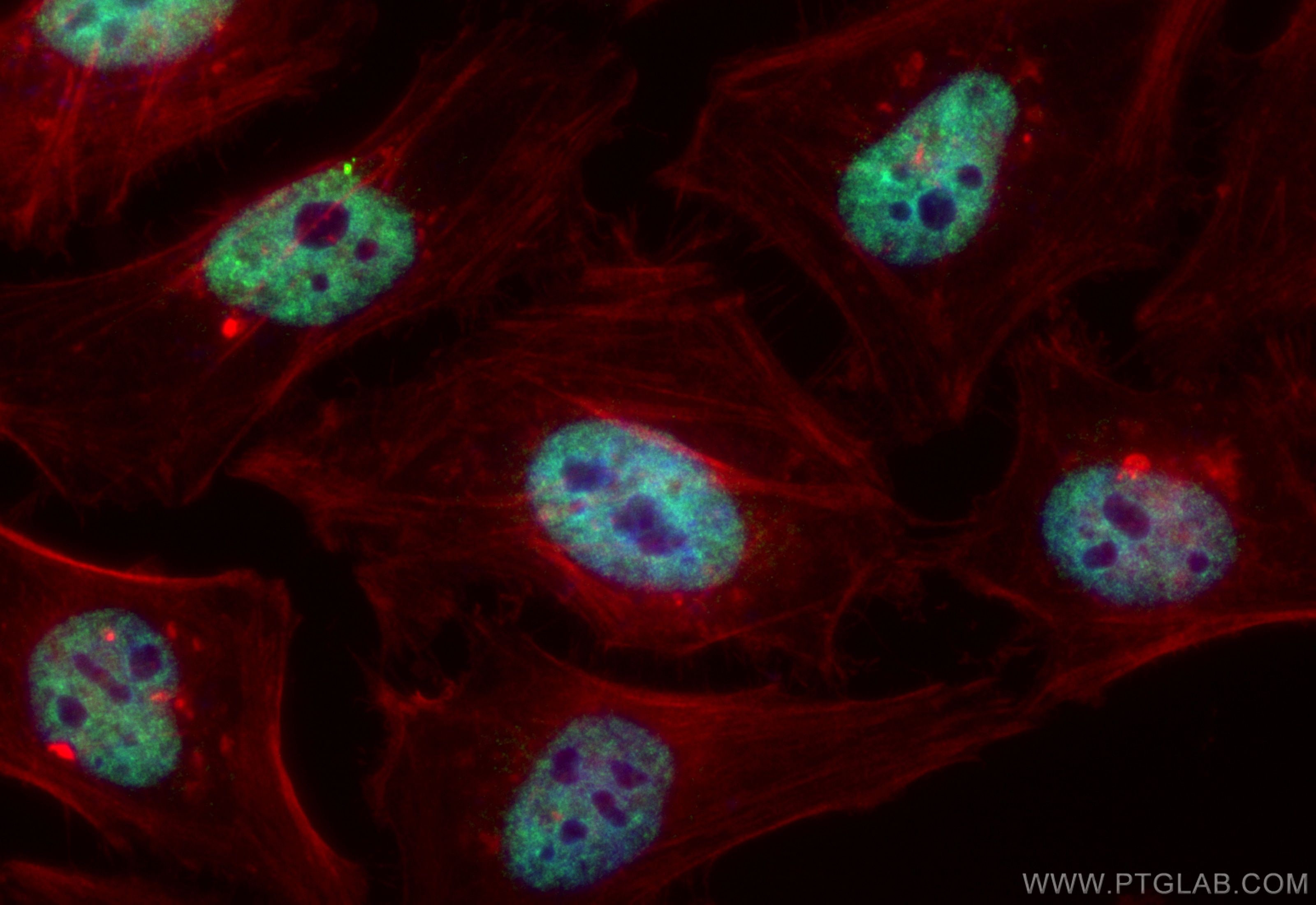Tested Applications
| Positive IF/ICC detected in | HeLa cells |
Recommended dilution
| Application | Dilution |
|---|---|
| Immunofluorescence (IF)/ICC | IF/ICC : 1:50-1:500 |
| It is recommended that this reagent should be titrated in each testing system to obtain optimal results. | |
| Sample-dependent, Check data in validation data gallery. | |
Product Information
CL488-83773-7 targets HNRNPA2B1 in IF/ICC applications and shows reactivity with human, mouse, rat samples.
| Tested Reactivity | human, mouse, rat |
| Host / Isotype | Rabbit / IgG |
| Class | Recombinant |
| Type | Antibody |
| Immunogen | HNRNPA2B1 fusion protein Ag6563 Predict reactive species |
| Full Name | heterogeneous nuclear ribonucleoprotein A2/B1 |
| Calculated Molecular Weight | 37 kDa |
| Observed Molecular Weight | 36 kDa, 38 kDa |
| GenBank Accession Number | BC000506 |
| Gene Symbol | HNRNPA2B1 |
| Gene ID (NCBI) | 3181 |
| RRID | AB_3673303 |
| Conjugate | CoraLite® Plus 488 Fluorescent Dye |
| Excitation/Emission Maxima Wavelengths | 493 nm / 522 nm |
| Form | Liquid |
| Purification Method | Protein A purification |
| UNIPROT ID | P22626 |
| Storage Buffer | PBS with 50% glycerol, 0.05% Proclin300, 0.5% BSA, pH 7.3. |
| Storage Conditions | Store at -20°C. Avoid exposure to light. Stable for one year after shipment. Aliquoting is unnecessary for -20oC storage. |
Background Information
HnRNPA2B1 is one of the heterogenous nuclear ribonucleoproteins (HnRNPs), which regulate the splicing and transportation of mRNA. It has a role in packaging nascent mRNA, alternative splicing, cytoplasmic RNA trafficking, translation, and stabilization. Besides it may involve in telomere maintenance, cell proliferation and differentiation, and glucose transport. Gene HURNPA2B1 encodes two proteins,HNRNPA2 (36kd) and HNRNPB1 (38kd), by alternative splicing.
Protocols
| Product Specific Protocols | |
|---|---|
| IF protocol for CL Plus 488 HNRNPA2B1 antibody CL488-83773-7 | Download protocol |
| Standard Protocols | |
|---|---|
| Click here to view our Standard Protocols |



